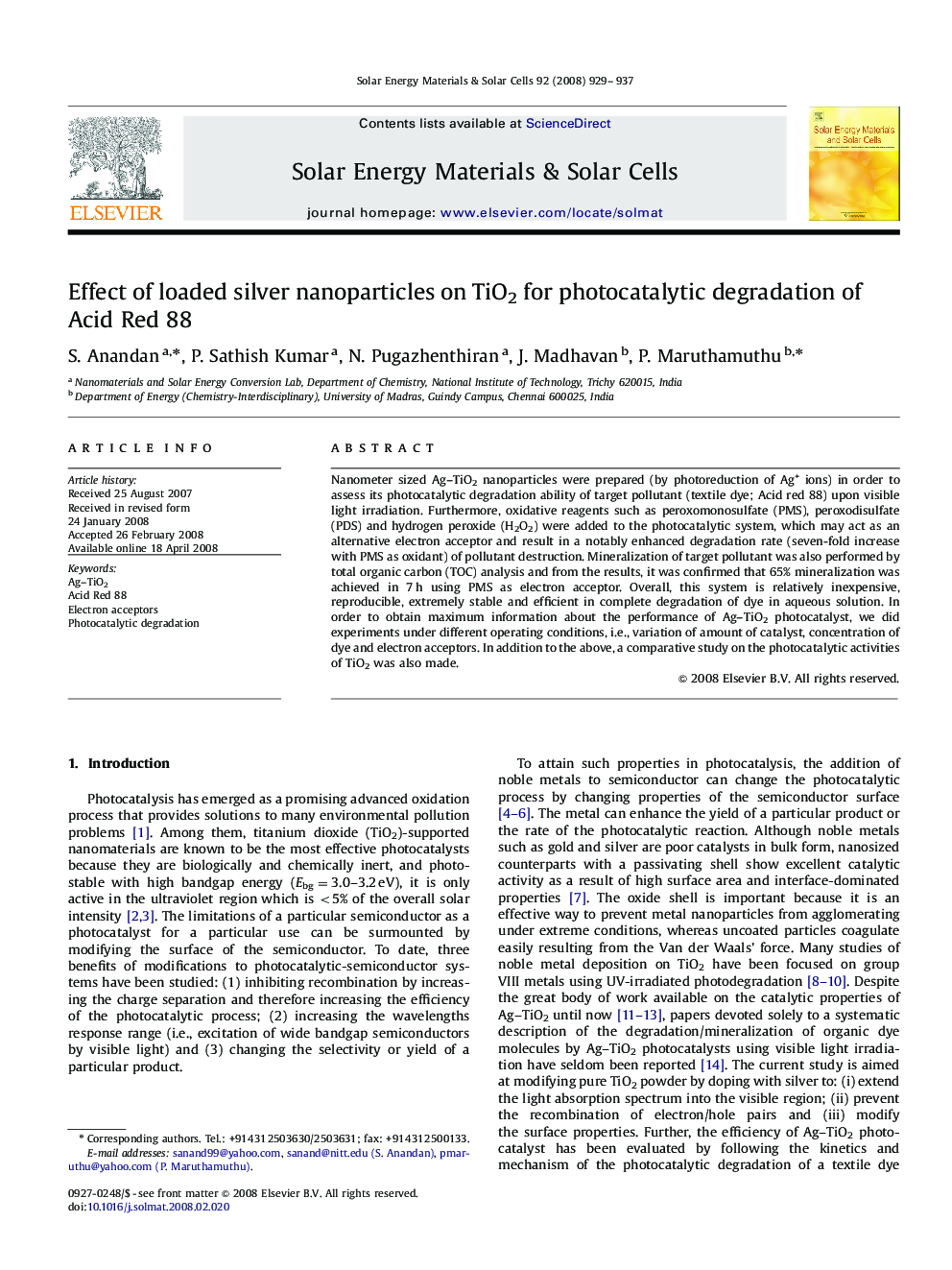| Article ID | Journal | Published Year | Pages | File Type |
|---|---|---|---|---|
| 80731 | Solar Energy Materials and Solar Cells | 2008 | 9 Pages |
Nanometer sized Ag–TiO2 nanoparticles were prepared (by photoreduction of Ag+ ions) in order to assess its photocatalytic degradation ability of target pollutant (textile dye; Acid red 88) upon visible light irradiation. Furthermore, oxidative reagents such as peroxomonosulfate (PMS), peroxodisulfate (PDS) and hydrogen peroxide (H2O2) were added to the photocatalytic system, which may act as an alternative electron acceptor and result in a notably enhanced degradation rate (seven-fold increase with PMS as oxidant) of pollutant destruction. Mineralization of target pollutant was also performed by total organic carbon (TOC) analysis and from the results, it was confirmed that 65% mineralization was achieved in 7 h using PMS as electron acceptor. Overall, this system is relatively inexpensive, reproducible, extremely stable and efficient in complete degradation of dye in aqueous solution. In order to obtain maximum information about the performance of Ag–TiO2 photocatalyst, we did experiments under different operating conditions, i.e., variation of amount of catalyst, concentration of dye and electron acceptors. In addition to the above, a comparative study on the photocatalytic activities of TiO2 was also made.
